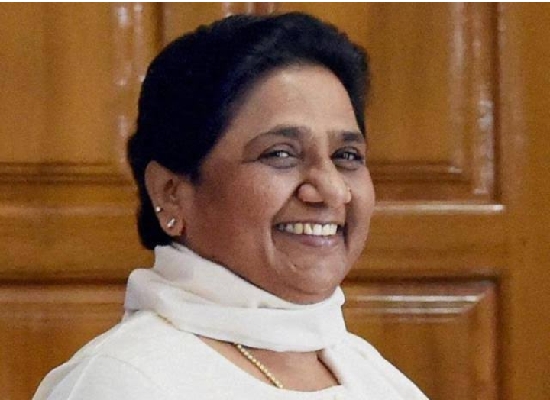
New Delhi, Jul 28: Chief Minister Ashok Gehlot had "unconstitutionally" merged six MLAs of the Bahujan Samaj Party (BSP) with the Congress in Rajasthan, he did the same in his earlier tenure too, for which we wanted to teach him and his party a lesson, said BSP chief Mayawati on Tuesday.
The BSP chief added that her party could have gone to courts earlier but decided to wait for the "right opportunity".
"In Rajasthan, after elections results, BSP gave unconditional support of all its 6 MLAs to Congress. Unfortunately, Chief Minister Ashok Gehlot, out of his malicious intent and to damage BSP, merged them with Congress unconstitutionally. He did the same even during his earlier tenure," Mayawati said here.
"BSP could have gone to the court earlier too but we were looking for the time to teach Congress party and CM Ashok Gehlot a lesson. Now we have decided to go to the Court. We will not let this matter alone. We will go even to the Supreme Court," she added.
The BSP chief further reiterated that the party has asked the six MLAs to vote against the Congress government led by Ashok Gehlot if a trust vote takes place on the floor of the Rajasthan Assembly, failing which "their party membership will be cancelled".
She further said that the merger of BSP MLAs with Congress was immoral and went against the mandate given by voters in Rajasthan.
"Ulta-chor kotwal ko daante (the thief accuses the cop of wrongs) they (Congress) themselves indulge in wrongdoing and then accuse us," she further said.
On Sunday, the BSP issued a whip to six MLAs, asking them to vote against Congress in case of a no-confidence motion or any proceedings to be held during the Rajasthan Assembly session.
National General Secretary of BSP Satish Chandra Mishra, while speaking to news agecncy said, "Notices have been issued to the six MLAs separately as well as collectively, pointing out that since BSP is a National Party, there cannot be any merger at the state level at the instance of six MLAs unless there is a merger of BSP at the national level. If they violate it, they will be disqualified.
Notices have been issued to all six MLAs- - R Gudha, Lakhan Singh, Deep Chand, JS Awana, Sandeep Kumar and Wajib Ali, who are elected to the Rajasthan Assembly."
However, later on Monday, Lakhan Singh, hit back saying he and the five others had already joined the Congress.
"We six MLAs have already joined the Congress. BSP remembered us after nine months. They have issued this whip, after a message from the BJP. On this basis they are going to court", said Karauli MLA Lakhan Singh.
Rajasthan government is in turmoil after simmering differences between Deputy Chief Minister Sachin Pilot and Gehlot came out in the open. Pilot was removed as the Deputy Chief Minister and the state unit chief of Congress.
The Congress has accused the BJP of indulging in horse-trading to bring down the Gehlot government. The BJP has rejected the allegations.







Comments
So much of hate all over for being a Muslim... May allah sho them right path and let them learn about islam...Surely they will regreat later..
Add new comment